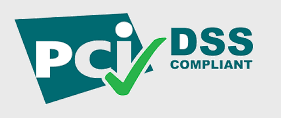Lytic enzymes such as cellulase, lysozome, labiase, achropeptidase and a number of others, play a significant role in protein and DNA extraction. While different lytic enzymes can be used for different applications, cellulase is usually the enzyme of choice when it comes to breaking down plant cell walls. What is it about cellulase that makes it particularly useful for plant cell lysis? Here are some things you should know.
The Protein Man

Recent Posts
Cellulase, a lytic enzyme to break plant cell walls for protein extraction
Topics: Protein Extraction
Stripping Membranes: A Great Addition to Western Blot Protocols
Commercial stripping buffers, such as G-Bioscience’s Western ReProbe™ and Western ReProbe™ PLUS, are specifically formulated to dissociate and remove all primary and secondary antibodies from the membrane-immobilized proteins without destroying the antigenic binding sites or removing the protein. This allows for several reprobings on the same membrane which will save you time, money, and precious protein samples. Western blotting can be time consuming (protein electrophoresis (1-2 hrs) + protein transfer (0.5 hrs to overnight)), so you want to make the most of your precious membranes and proteins by stripping and reprobing your nitrocellulose or PVDF membrane. There are many advantages to stripping your membrane such as: conserving limited/expensive protein samples, using different antibodies to analyze the same sample and confirm results, compare phosphorylated and total protein on the same blot, recoup antibody for later use, run less SDS-page gels and transfers, and to remove/adjust the concentration of your antibody.
Topics: Western Blotting
ECL (Enhanced Chemiluminescence) Reagents: Enhanced How?
There are a lot of reasons why researchers all over the world choose enhanced chemiluminescence (ECL) detection for a wide range of Western blot applications. ECL is considered as the experts’ detection method of choice due to its high sensitivity, excellent signal-to-noise ratio, and wide dynamic range. Additionally, ECL is also useful in quantifying a wide variety of biological materials such as cell RNA, DNA and other analytes.
Topics: Western Blotting
Key Protein Concentration & Enrichment Techniques | G-Biosciences
What is protein enrichment and why is there a need for it? Basically, protein enrichment is a technique where proteins of interest in a biological sample are concentrated to make them more suitable for identification and downstream analysis.
Topics: Protein Concentration, Protein Fractionation, Protein Extraction




.jpg?width=788&name=Protein%20Structure%20(8).jpg)


